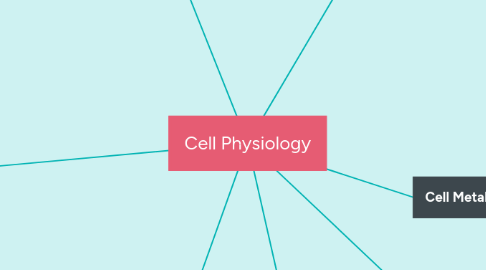
1. Cytoskeleton
1.1. Filaments
1.1.1. Actin Filaments
1.1.2. Intermediate Filaments
1.1.3. Microtubules
1.2. Proteins
1.2.1. Nucleation
1.2.2. Severing
1.2.3. "Side-binding"
1.2.4. Cross-linking
1.2.5. Motor
2. Cell Signaling
2.1. Intercellular
2.1.1. Juxtacrine
2.1.2. Paracrine
2.1.3. Endocrine
2.1.4. Autocrine
2.1.5. Synaptic
2.2. Intracellular
2.2.1. Non-surface
2.2.1.1. Steroid
2.2.1.2. Thyroid
2.2.1.3. Retinoids
2.2.1.4. Vitamin D
2.2.1.5. NO
2.2.2. Surface
2.2.2.1. Ion-channel coupled
2.2.2.2. G-protein coupled
2.2.2.3. Enzyme coupled
2.2.2.3.1. RTKs
2.2.2.3.2. TK-associated
2.2.2.3.3. RSKs
2.2.2.3.4. HK-associated
3. Cell Adhesion
3.1. Cell-cell Junctions
3.1.1. Occluding junctions
3.1.2. Channels
3.1.3. Anchoring junctions
3.1.3.1. Desmosomes
3.1.3.2. Cadherens
3.1.4. Signaling junctions
3.2. Cell-ECM Junctions
3.2.1. Integrin-actin
3.2.2. Hemidesmosomes
3.2.3. Signaling junctions
3.3. Basal Lamina
4. Extracellular Matrix
4.1. Fibrous proteins
4.1.1. Laminin
4.1.2. Collagen
4.1.2.1. Type IV (in basal laminae)
4.1.2.2. Type I (most common)
4.1.3. Fibronectin
4.1.4. Elastin
4.2. Glycosaminoglycan polysaccharides
4.2.1. Hyaluronic acid
4.2.2. Chondroitin sulfate & Dermatan sulfate
4.2.3. Heparan sulfate
4.2.4. Keratan sulfate
4.3. Links to integrins
4.4. FIbroblast production
4.5. Proteoglycans (Proteins + GAGs)
4.5.1. Regulates secreted proteins
4.5.2. Co-receptors
5. Cell Membrane
5.1. Lipids
5.1.1. Phospholipids
5.1.2. Glycolipids
5.1.3. Sterols
5.2. Protein
5.2.1. Integral
5.2.2. Peripheral
5.3. Dynamics
5.3.1. Fluidity
5.3.2. Transport
5.3.2.1. Passive
5.3.2.2. Facilitated
5.3.2.3. Active
5.3.2.3.1. Primary
5.3.2.3.2. Secondary
5.3.2.4. Bulk
